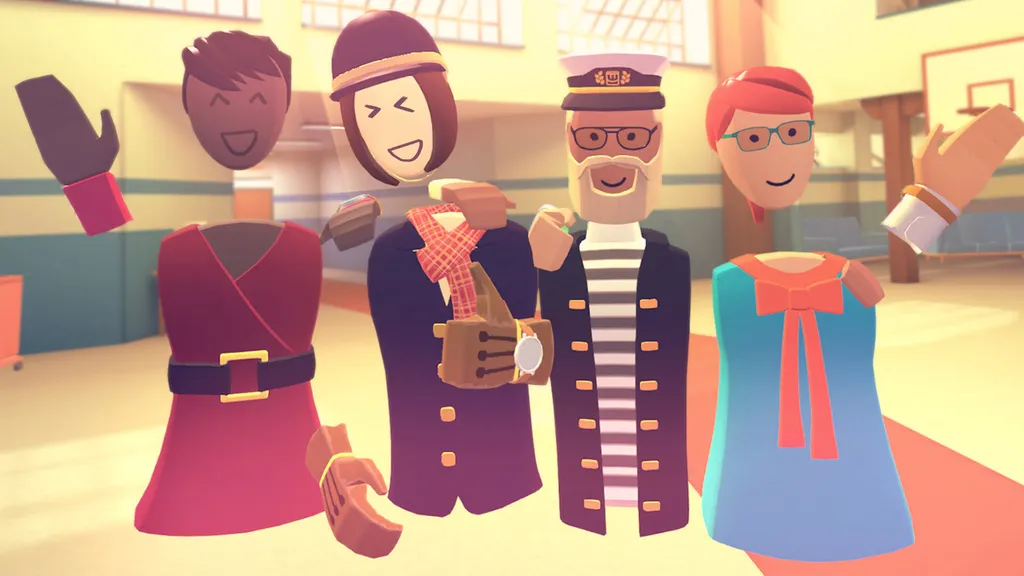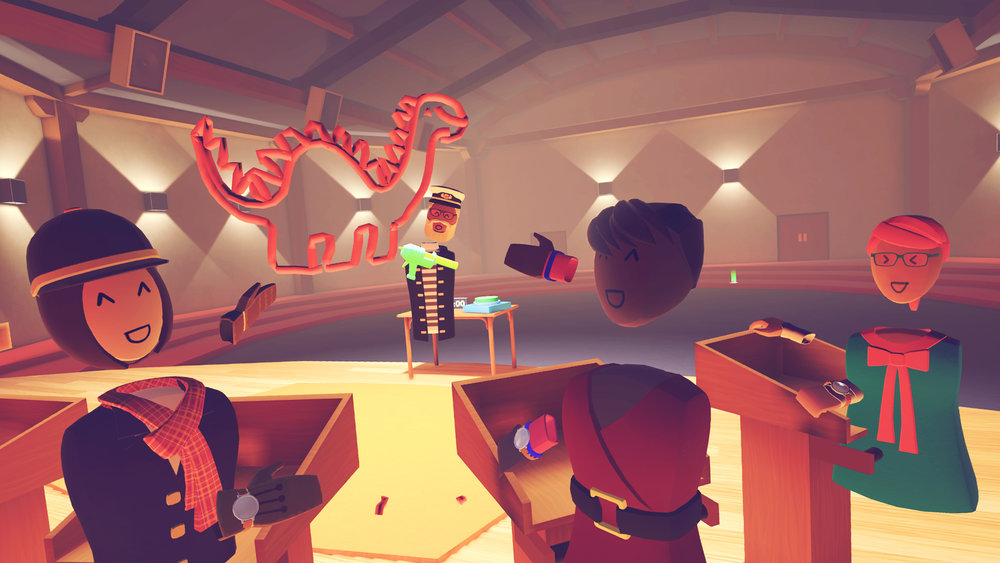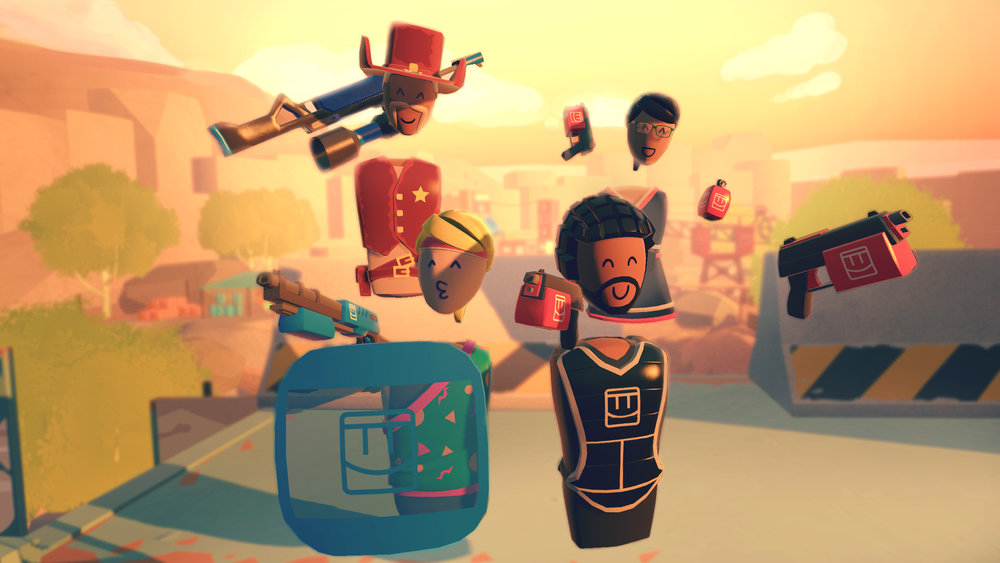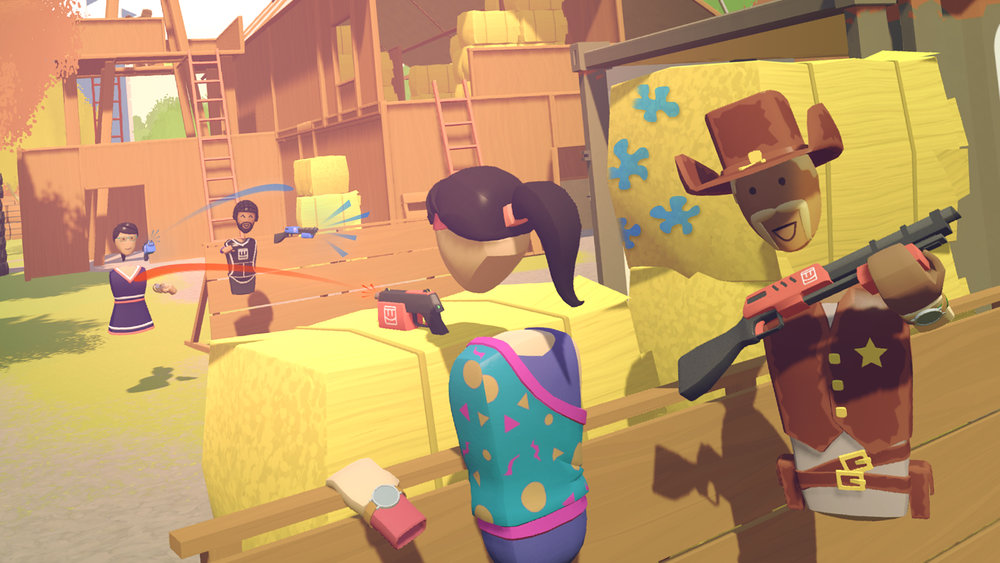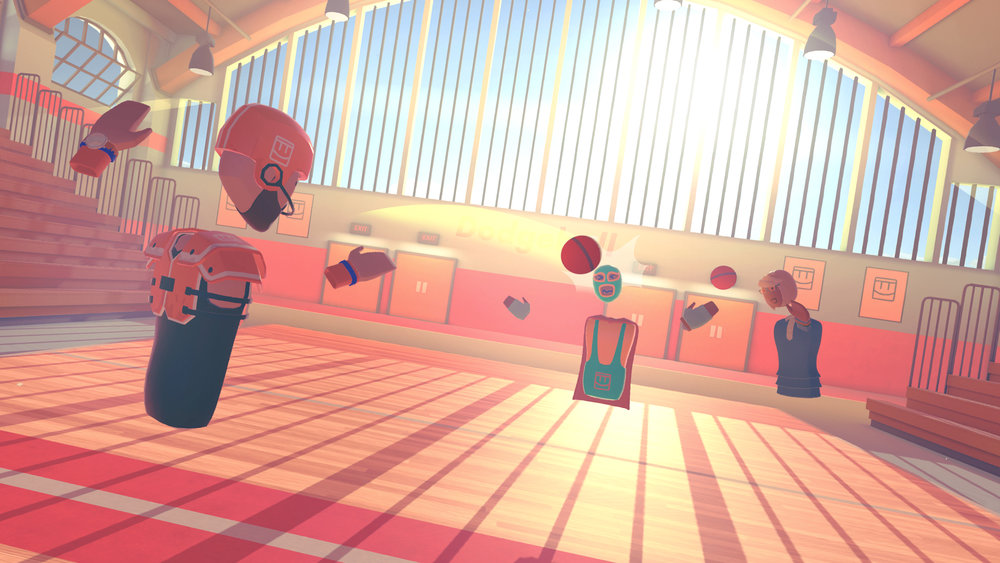The conquest for social VR dominance is a highly contested race among a mixture of tech giants and startup indie companies. Many of the first platforms to hit the scene, such as vTime and AtlspaceVR have made names for themselves in their wide accessibility across devices and flexibility of uses for the VR community, while others take a more centralized focus on providing fun and engaging activities for players to enjoy. Rec Room falls into that second category.
You can play Rec Room on both the HTC Vive and Oculus Rift with Touch for free right now and if Nick Fajt, CEO and Co-Founder of Against Gravity, the developers behind Rec Room, has any thing to say about it, the free-to-play status will likely remain forever. It’s a key part of their community building strategy.
https://www.youtube.com/watch?v=nPb6XoJN9KQ
“Monetization isn’t an immediate concern for us, we’re really just exploring what social VR looks like right now,” Fajt explained to UploadVR in an interview. “We focus on what the community wants and asks for. You can easily imagine some in-app payment strategies focused on customization and personalization that we could pursue later on, kind of like DOTA or League of Legends — skins, customization options, that sort of stuff.”
Even without a way to make income from the game yet, the studio has garnered critical acclaim and adoration from fans. Their approach to designing the game around what the community is most interested in has led to things like the creation of private rooms you can invite people into with white boards and other props, as well as the streamlining of Rec Room’s core features.
“A huge part of the way Rec Room is developed is that we don’t really have a cast in stone one year product plan,” Fajt said. “We treat it as a learning machine. We look at what people do and what they say they want to do and use that as a North Star for what we develop next. A lot of the things we make are things we’ve heard from the community that people want to see or to make better. You can see what we did with paintball as an example: launching with 1 map, then adding more weapons and more maps. We want to do that in the other games as well.”
A significant factor that contributes to Rec Room being so special is how they’ve managed to identify and represent aspects of traditionally flat menu-based interfaces of screen-based games within VR. Instead of looking at a main menu, you’re standing in your dorm room. From here, you can adjust options, customize your appearance, and get ready before heading out. Instead of a multiplayer lobby, there’s the main locker room area where other players are found chatting, goofing off, and having a good time. Each game has a dedicated entry door. You access your friend’s list and other menu items by looking at your watch. Everything feels both intuitive and natural given the conceit of the game world.
“Our focus has been on interactions that can only happen in VR,” Fajt said. “That’s an area that we really love. We’re enamored with the Vive and Rift’s capabilities with 6 degrees of freedom tracking. We’ve embraced what you could call ‘structured social VR’ where you meet in a room with a context already there. That really helps people break the ice. Even the locker room has toys and ‘social lubricators’ that make people feel more comfortable approaching a stranger.”
Instead of randomly messaging a user from a chat box or addressing them by their potentially confusing or overly long username, you can just walk up and wave. Shake hands to send a friend invite automatically. Knock down a high-five and watch the visual effects pop all around you. Breaking down those barriers of social anxiety is one of the best and most powerful things that VR can do for people and it’s an area where Rec Room truly excels.
“Rec Room is something for pople ages 13 and up, we want people that are above that age range, but we do like to welcome people of various ethnicities, backgrounds, genders, etc — that has been a big focus for us,” Fajt said. “We didn’t want something that felt like a strictly ‘conventional gamer’ aesthetic. We wanted a nice variety in there for a lot of different people. Paintball is a bit more competitive, whereas something like charades is more of a social game with talking and a higher bandwidth of communication happening than in paintball. Disc golf is something in the middle, higher activity than charades, but welcomes social chatter too.”
Right now, as many have said, this is the Wild West of VR. Big companies like Facebook are still in the process of fully developing their social VR solutions and tons of challengers are entering the arena. Rec Room has earned its niche in the months since it launches, creating a fun and diverse play space available to Rift and Vive users totally free of charge.
“Right now, with all of the people that are interacting in Rec Room in the first year of VR, it reminds me of the early ICQ internet days,” Fajt admitted. There aren’t a ton of people online and you may not have IRL friends there yet, but we’re all making meaningful connections with people we meet in VR. We’re just trying to create platform to help support that.”
Rec Room is available for free on Oculus Home and Steam right now.
What types of updates and new games do you want to see next? Let us know down in the comments!

